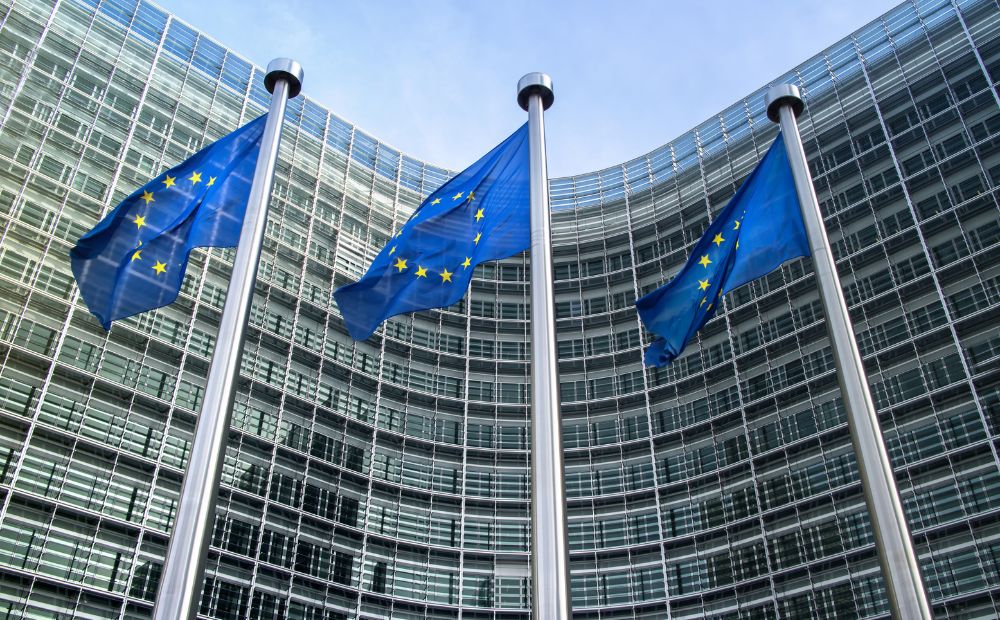Reusing and recycling – compromises to the Packaging and Packaging Waste Regulation

The producer responsibility scheme is set to change in a fundamental way. The number of free riders who dodge their responsibilities will increase manifold. The Finnish bio-based packaging industry will have to shut up shop and the bottle deposit system will have to be cut back. As a result, the environmental impacts will increase.
Fortunately, the worst-case scenarios that could result from changes to the Packaging and Packaging Waste Regulation currently under debate within the EU seem unlikely to materialise. The European Parliament voted on its position in late November, with the result bringing a dose of pragmatism to the regulations.
“Fortunately, the Parliament’s vote on the regulation resulted in a good starting position for the final negotiations. The Commission’s proposal could, at worst, have had dramatic effects on the bio-based packaging industry in Finland. Prohibitions and restrictions alone do not reduce waste, instead innovative, renewable and recyclable packaging solutions are needed. Finland is the place to develop these solutions; now we need to secure the market for them.” Henna Virkkunen, MEP
Producer responsibility fees to be earmarked
With regard to producer responsibility, the European Parliament has proposed a number of amendments to the Commission’s regulatory proposals. For example, MEPs want some of the money from fee changes to be earmarked to finance the collection, sorting and recycling of packaging waste in each Member State. The Commission wants to determine uniform recyclability performance grades from A to E but not the level of the fees.
The Parliament’s position is that Member States should be required to ensure that extended producer responsibility schemes and deposit systems dedicate a share of their budgets to financing reduction and prevention actions and reuse infrastructure for the deployment of reuse systems.
The Parliament wants to remove a clause from the draft regulation that would require a national symbol for producer responsibility, which packaging producers would print on their packaging to indicate that they are part of the producer responsibility scheme. MEPs also want small businesses to be excluded from a number of additional obligations that would be introduced in the new regulation. The Parliament has proposed an amendment that would require online platforms to ensure that all companies trading thereon meet their producer responsibility obligations; it also proposes that a packaging forum consisting of packaging experts be set up to assist the Commission.
“It was important to me that the final position saw the inclusion of recycling and reuse as equal means of reducing packaging waste, as well as developments to the separate collection of packaging waste. The range of measures now available will make it possible to reduce packaging waste in Europe.” Elsi Katainen, MEP
The most controversial EU law of the year
While it sounds dry, the Packaging and Packaging Waste Regulation has been one of the most talked-about legislative initiatives in Brussels this year. The objective of the proposed regulation – to reduce packaging waste – is necessary. Each EU citizen produces 180 kilograms of packaging waste every year, an increase of 20% over the last ten years. If nothing is done, the amount of packaging waste produced will continue to increase exponentially. Plastic packaging waste, for example, is projected to increase by almost 50% from the current level by 2030.
The Commission conducted impact assessments on the proposal, but many parties consider these to be insufficient. Many aspects of the packaging life cycle, including energy and water consumption, impact on food waste, and food safety, have not been appropriately addressed. Significant investments have been made in renewable, bio-based packaging in Finland, but the Commission’s proposal does not recognise the advantages they offer. The proposal includes absolute bans on various types of packaging and reuse requirements for others, without properly considering issues such as food safety.
“It’s especially important that some of the proposed reuse targets and bans on some types of packaging were made more flexible or removed. Single-use, recyclable packaging for food and beverages as well as packaging for fruit and vegetables were completely removed from the list of banned packaging.” Aaron Vuola, Rinki Board Member, Manager, Circular Economy and Environment at the Finnish Forest Industries Federation
Producer responsibility is an effective tool
The Commission wants to shift more responsibilities to the producer responsibility scheme.
There are calls to harmonise regulations and practices concerning the recycling of packaging waste and producer responsibility across Member States. In response, the Commission has proposed changing the Packaging and Packaging Waste Directive to a regulation that Member States will have to implement as it is.
Producer responsibility schemes and their administration are different in each country, which prevents sharing of best practices and makes it difficult to compare outcomes. According to an analysis by the extended producer responsibility alliance EXPRA, each of its members saves the equivalent carbon dioxide of a car journey from Helsinki to Oulu every year through their recycling practices. Adopting best practices across the EU could serve as an effective means to help slow global warming.
The content of the regulation will be known next year
An unprecedented level of lobbying resulted in more than 2,000 proposed amendments being submitted to the Environment Committee, and more than 700 to the plenary vote. The regulation is still going be too detailed from a producers’ perspective, but the MEPs’ position provides a good basis for the final discussions between the Council, the Parliament and the Commission.
The final content of the ambitious regulation and its impact on the day-to-day operations of Finnish companies with producer responsibility will become clear in spring 2024. The positions of the Council and the European Parliament differ considerably, which will make it difficult to reach a consensus. The Commission wants the regulation to be finalised before the European Parliament elections in May 2024.
Here is how the European Parliament amended the key points of the regulation:
- Reuse targets for take-away packaging were removed; instead, the focus will be on more efficient recycling of packaging.
- Single-use packaging for fresh fruit and vegetables under 1.5 kg and single-use dishes in restaurants were excluded from bans.
- Requirements to reuse and recycle were changed to allow for deviation in cases where better alternatives are available in terms of environmental impact.
- Sales packaging of highly perishable drinks and beverages, such as dairy products, were excluded from the reuse requirement.
- The proposed requirement to refill bottles was dropped, securing the continuation of the bottle deposit and return systems in use in the Nordic countries.
- Coatings and linings were excluded from the definition of composite packaging for cases in which their weight does not exceed 10% of the total weight of the packaging unit.
- Good quality recycling was redefined to not only refer to closed-loop recycling, which is not suitable for materials recycled by the forest industry, the applications of which vary from packaging to insulation material.
The Packaging and Packaging Waste Regulation process
- The Packaging and Packaging Waste Regulation (i.e. the old Packaging and Packaging Waste Directive; PPWD) is an EU law that ensures the environmentally friendly treatment of packaging and packaging waste.
- The first version came into effect in 1994. The objectives of the Directive have been tightened with every amendment.
- 30/11/2022: The Commission unveils a long-awaited proposal for a Packaging and Packaging Waste Regulation.
- January 2023: The European Parliament starts work on the proposal. Frédérique Ries (Renew, Belgium) from the Committee on the Environment, Public Health and Food Safety (ENVI) is appointed rapporteur. Shadow rapporteurs include Finnish MEP Elsi Katainen.
- March 2023: Member States start work on the proposal for the regulation in the Environment Council.
- April 2023: End of stakeholder consultation.
- 24/10/2023: ENVI vote.
- 22/11/2023: The European Parliament votes on its position in plenary.
- 18/12/2023: The Council resolves to find a common position on the proposed regulation at a meeting of the Environment Council.
- 2024: Trilogue negotiations are held between Member States, the Parliament and the Commission to agree on the final content of the Regulation.
